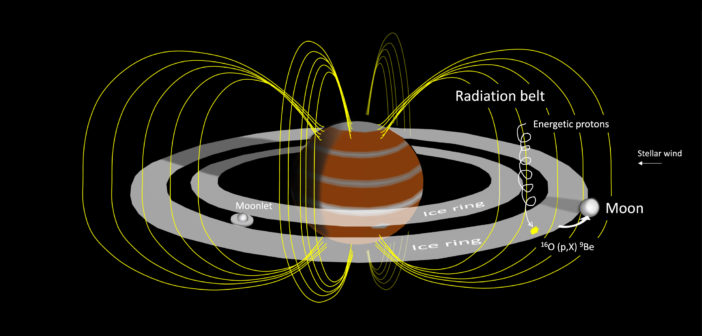This schematic shows one possible solution to an intriguing white-dwarf mystery, in which two white dwarfs have been observed to contain an overabundance of the rare element beryllium. Unlike many heavy elements, beryllium isn’t formed in stars; instead, it’s produced by spallation, in which larger atomic nuclei break up after being bombarded by high-energy protons. So how did this unexpected element end up in the atmospheres of white dwarfs? A new publication led by Alexandra Doyle (UC Los Angeles) proposes a path: white dwarfs may become polluted by beryllium after accreting the icy exomoons of giant planets orbiting the dwarf. If these exomoons formed within the radiation belts of their planets, their composition could include spallogenic nuclides like beryllium. When the moons accrete onto the white dwarf, that beryllium then pollutes the white dwarf’s atmosphere. Doyle and collaborators illustrate the extreme environment in which these beryllium-enriched ices form in the image above. To learn more, check out the original article below.
Citation
“Icy Exomoons Evidenced by Spallogenic Nuclides in Polluted White Dwarfs,” Alexandra E. Doyle et al 2021 ApJL 907 L35. doi:10.3847/2041-8213/abd9ba


2 Comments
Pingback: É Possível Encontrar Sinais de Exoluas Na Atmosfera de Anãs Brancas?
Pingback: É Possível Encontrar Sinais de Exoluas Na Atmosfera de Anãs Brancas? | Mestre Jedi